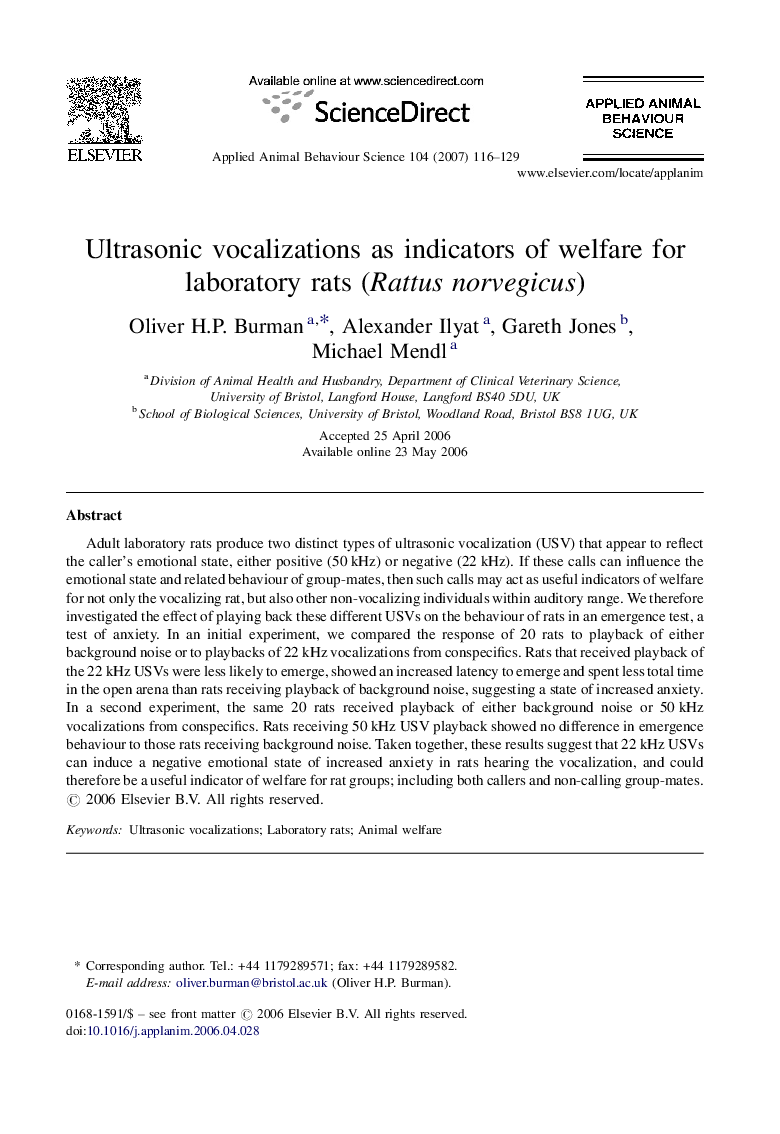| Article ID | Journal | Published Year | Pages | File Type |
|---|---|---|---|---|
| 6379834 | Applied Animal Behaviour Science | 2007 | 14 Pages |
Abstract
Adult laboratory rats produce two distinct types of ultrasonic vocalization (USV) that appear to reflect the caller's emotional state, either positive (50Â kHz) or negative (22Â kHz). If these calls can influence the emotional state and related behaviour of group-mates, then such calls may act as useful indicators of welfare for not only the vocalizing rat, but also other non-vocalizing individuals within auditory range. We therefore investigated the effect of playing back these different USVs on the behaviour of rats in an emergence test, a test of anxiety. In an initial experiment, we compared the response of 20 rats to playback of either background noise or to playbacks of 22Â kHz vocalizations from conspecifics. Rats that received playback of the 22Â kHz USVs were less likely to emerge, showed an increased latency to emerge and spent less total time in the open arena than rats receiving playback of background noise, suggesting a state of increased anxiety. In a second experiment, the same 20 rats received playback of either background noise or 50Â kHz vocalizations from conspecifics. Rats receiving 50Â kHz USV playback showed no difference in emergence behaviour to those rats receiving background noise. Taken together, these results suggest that 22Â kHz USVs can induce a negative emotional state of increased anxiety in rats hearing the vocalization, and could therefore be a useful indicator of welfare for rat groups; including both callers and non-calling group-mates.
Related Topics
Life Sciences
Agricultural and Biological Sciences
Animal Science and Zoology
Authors
Oliver H.P. Burman, Alexander Ilyat, Gareth Jones, Michael Mendl,
